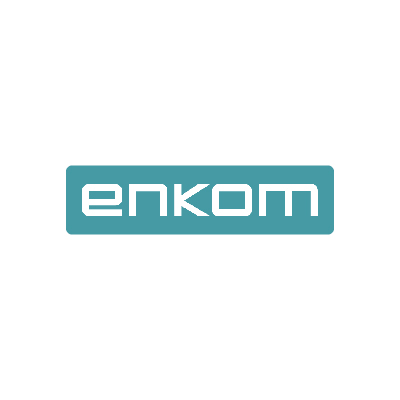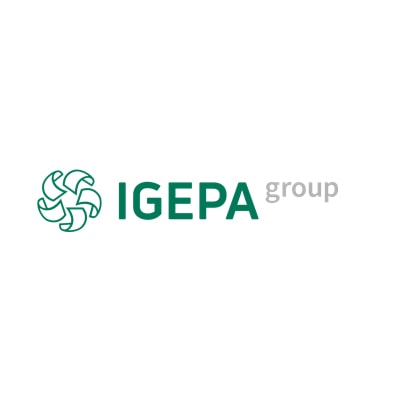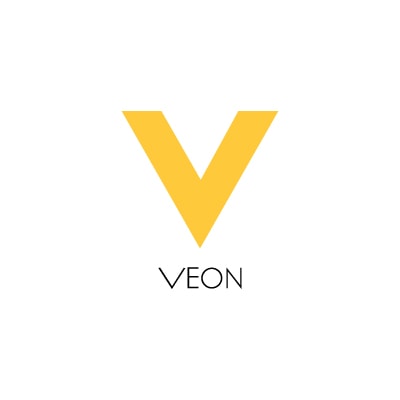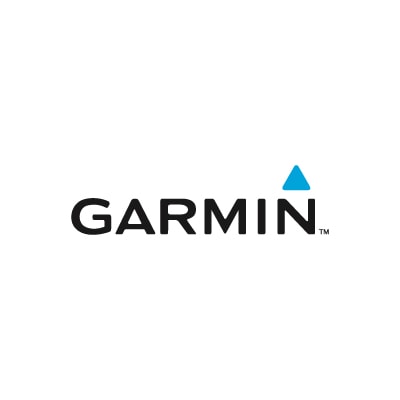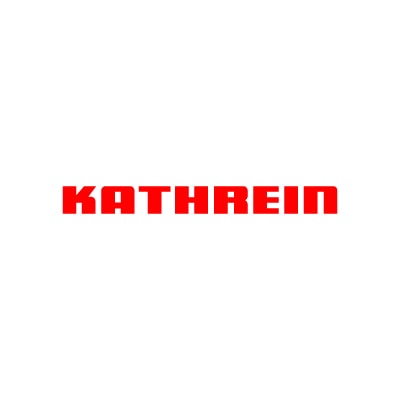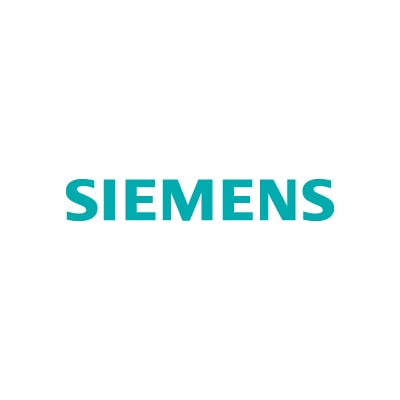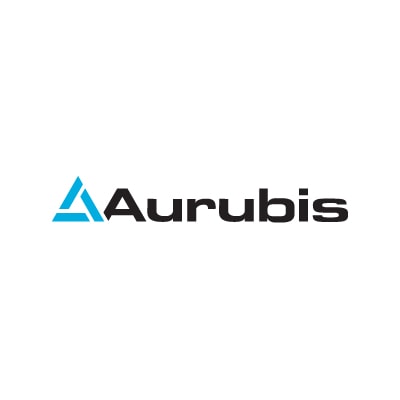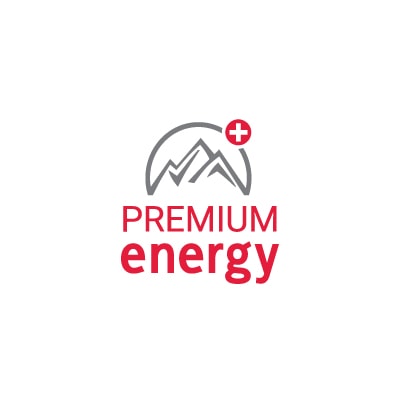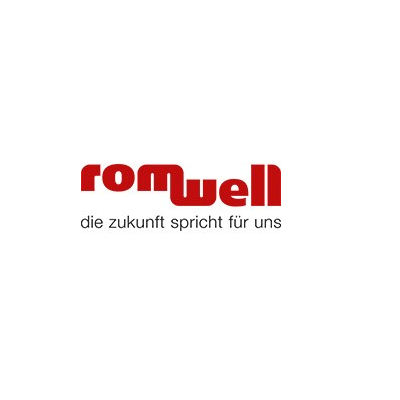In order to give you an insight into our working methods, we present some selected projects from recent years below:
Business Model | Growth Initiative | Digital Portfolio Development
Situation and challenge
The new organisation was composed of three different business segments (Aviation, Mail/Parcel &Logistics) without the definition of a clear growth strategy. The goal was to leverage synergies and create a growth plan based on the digitalisation of the portfolio elements with a focus on scalable portfolio building blocks for all segments on one platform.
Goal and task
- Development of a holistic business strategy with “One Digital System House”.
- Development of a digital portfolio element for aviation, mail/parcel and logistics services
- Design of the associated business and operation models
- Development and responsibility of a growth strategy
Approach
- Definition of the current baseline / starting position
- Develop segment-specific business strategies, with a development platform, into a digital business model
- Build / integrate a future-oriented portfolio derived from market and customer requirements
- Alignment of goals and milestones with stakeholders / management
- Calculation of business cases and investment plans
- Development of the “go-to-market” approach for a global roll-out
- Setting up program management to implement the growth initiative
Results and achievements
- Development of a holistic portfolio and digital strategy
- Set up a “go-to-market” approach model
- Agile development of portfolio components at international, networked locations
- Market entry with strategic customers / co-creation models
- Implementation of the goals in the planned time horizon with first pilot customers
Business Model | Development of a new business model
Situation and challenge
In the increasingly demanding environment of e-waste recycling, with its strict regulations and increasing competition from Asia, securing, providing and accessing sufficient quantities of e-waste is crucial for the economic efficiency of the processes and the success of the company.
Goal and task
- Develop an e2e business model that provides access to e-waste directly at source and ensures its long-term sustainability
- Analysis of the market and identification of the most promising channels
- Evaluation of potentials and growth areas
Approach
Identification of market trends and target markets
- Competitive analysis, e-waste, “value streams”, competences and strategic GAP analysis
- Design of the business- and solution model
- Execution of scenario simulations and calculating business plans including investment calculations
- Creation of the management decision paper and a master plan
Results and achievements
Development of a new business model “Recycling as a Service” based on an e2e recycling platform
- Creation of a detailed investment calculation for 7 recycling centers including different scenario simulations
- Development of a “go-to-market” master plan
- Pilot project launched with the leading e-commerce online retailer in Germany
Business Model | Development of a Business Strategy
Situation and challenge
A new managing director was appointed to develop a growth strategy. The new organisation was made up of three different companies without having defined a clear growth strategy. The goal was to leverage synergies and create a growth plan. For this purpose, the existing portfolio elements had to be optimised and additional portfolio components had to be developed.
Goals and tasks
Development of a digital portfolio for maintenance (own and third-party systems)
- Design of the associated business and delivery models
- Definition of competence requirements and growth areas
- Organizational realignment
Approach
Definition of the current baseline / starting position
- Workshops with the product managers using the CANVAS business model modules
- Identification of potential business areas and market trends / requirements and derivation of solution areas to be addressed
- Development of the respective value proposition with a holistic software and customer business case model
- Determination and coordination of the required competence requirements (technical and management competences)
- Strategic recommendations and creation of a strategy map, divided into focus areas with development and implementation phases
Results and achievements
Development of a holistic strategy paper, including business scenarios
- Derivation and implementation of a standard business case model to evaluate portfolio building blocks for applications and services
- Evaluation and recommendation of the future operating model
- Determination of the Roadmap 2023+
- Identifying potential cooperation partners and conducting initial discussions
Smart Services | Introduction of “Data Driven Services“
Situation and challenges
A leading mechanical engineering manufacturer wanted to reduce its dependency on product sales and maintenance and to achieve further sales through a higher degree of digitalisation and networking of its products. In addition to the technological requirements for the products, the corresponding concept for the collection of data, the use / commercialisation of the data and the required applications had to be created.
Goal and task
Creation of a concept on how to collect and commercialise machine data
- Defining the processes, technologies and applications required for this purpose
- Selecting the most suitable suppliers and service providers
- Definition of the required data
- Operational and strategic match with the customer ECO-SYSTEM (customers, suppliers, etc.)
- Transformation roadmap and “go-to-market” plan
Approach
Analysis and evaluation of existing processes
- Creation of a concept for the commercialisation of the acquired machine data
- Evaluation of potentials and risks by means of matrix comparison and analysis algorithms
- Definition of drivers, value creation elements, organisational and technological requirements by means of Value Benefit Analyses, strategy map
- Selection and coordination with development partners
- Derivation of an investment plan
- Setting up a digital roadmap for the project
Results and achievements
Concept and implementation plan for the introduction of “Data Driven Services”
- Technology and supplier selection
- Investment plan created
- Transformation roadmap established
- Estimated additive sales revenue of +26% in the next 3 years
Smart Services | Digital Worker
Situation and challenges
Telecommunications infrastructure worldwide is facing major challenges due to rising costs and increased customer demands for quality and speed in deployment, operation and service. This has prompted a leading telecommunications infrastructure manufacturer to consider digitising its Global Services business unit. Innovative technologies and digital processes were to be introduced to support employees locally and in real time. The central challenge was to transform manual processes into digital processes.
Goal and task
- Concept creation for the global control and management of service employees
- Process- and workflow definition
- Selection of technologies and implementation partners
- Calculation of investment needs and profitability
- Creation of a digital roadmap
Approach
- Analysis and evaluation of existing processes
- Conceptualization of “Digital Worker” and evaluation of potentials and risks
- Definition of drivers, value creation elements, organisational and technological requirements
- Selection and coordination with development partners
- Development of an investment plan
- Creation of a project-related digital roadmap
Results and achievements
- Implementation plan for the introduction of “Digital Worker”
- Technology- and supplier selection with investment planning
- Digital roadmap created and “Digital Worker” project launched
- Start of pilot projects with network operators in 2 regions
Lean Operations | Quality Management
Situation and challenge
Increased complaints led to a reduction in customer satisfaction. At the same time, capacity utilisation was at the limit, combined with high demand. The existing IT did not meet the requirements of modern logistics in terms of processes, milestones and transparency.
Goal and task
- Establishment and continuous development of a modern quality management system
- Continuous analysis, optimisation and further development of the existing processes – from ordering to delivery – in coordination with the interface partners (“end-to-end”)
Approach
- Recording of existing processes and associated parameters
- Identification of the most important fields of action and setting up of 5 project streams
- Definition and introduction of a KPI system and implementation of internal audits
- Definition of internal quality audits and implementation of continuous implementation
- Project management, controlling and change management
Results and achievements
- Introduction of a holistic quality management system
- Design of processes and workflows in consultation with all stakeholders
- Creation of a standard process model across the entire value chain
- Definition and implementation of a metrics model
- Definition and implementation of shift models
- Improvement of the returns and credit note rate by 20%
Lean Operations | Managed Services
Situation and challenge
The cost base of network maintenance in Pakistan and Algeria was above the average benchmark compared to other countries, even when country-specific environmental variables were not considered. Therefore, measures needed to be taken to improve the cost base and competitiveness.
Goal and objective
Reduce the cost base by developing new methods, tools and processes
- Focus on preventive and reactive maintenance and optimisation of the network operation centre
- Establishment of a lean culture in the company
Approach
Inventory of the current state, based on data and process flows
- Identification and classification of improvement actions
- Calculation, governance model and implementation plan
- Prove of concept and assurance of planned savings
- Development and provision of tools for operational support
Results and achievements
Introduction of a new governance model and metrics system with clear definition of roles and responsibilities in coordination with divisional management
- Regular training of local teams in methodological approaches to ensure a continuous improvement cycle
- Sustainable reduction in operating costs
- Significant improvement in network availability
Lean Operations | Process Optimisation
Situation and challenge
Increasing competitive pressure prompted one of the leading manufacturers in the telecommunications network infrastructure sector to set up an optimisation program in the service business unit. The goal was, in addition to a 15% cost reduction, the introduction of a Lean culture within the own organisation and the service provider network to ensure a sustainable increase in value.
Goal and task
- Identification, quantification and cost improvement measures using KaiZen & Six Sigma methodology
- Assessment of:
- Global Distribution Centre
- Reverse Logistics Centre (Netherlands)
- Production & repair sites (Finland, Hungary, India, China, USA)
- Network implementations (Japan, UK, Germany, Turkey, Saudi Arabia)
- Inventory management (global)
- Master data (global)
Approach
Conduct KaiZen workshops to communicate Lean thinking to manufacturers and service providers
- Identification and classification of improvement measures as well as definition of success control
- Creation of calculation models, governance model and implementation plans
- Ensuring defined savings (price negotiations with service providers)
- Stakeholder management, change management and escalation management
Results and achievements
- Creation of a standard process model with Lean principles
- Global key performance indicators defined and implemented
- Processes and workflows created, agreed and implemented with all stakeholders
- Cost savings of 15 % realised
- Master plan agreed with business leaders and implemented
Lean Operations | Optimising Reverse Logistics
Situation and challenge
The reverse logistics centre of a leading telematics product manufacturer is an established location. This means that the infrastructure as well as the systems and resources used have been expanded to meet the requirements. There was no fundamental re-design. This led to inefficiencies and low customer satisfaction. The result was high service costs and decreasing margins.
Goal and task
- Analysis and optimisation of the e2e reverse logistics processes
- Reduce costs and improve customer satisfaction
- Definition of the maximum processing volume at this location without further infrastructure investments
Approach
- Creation of transparency, implementation of a detailed material and value flow analysis
- Analysis of available data (returns planning, failure rate, TAT, etc.) and the IT system landscape
- Definition of short- and medium-term improvement measures
- Redesign of the workshop layout to minimise transport times and increase flexibility
- Development of the e-guidance workflow with team
Results and successes
- Reduction of reverse logistics costs
- Increase in potential capacity by > 25% through the introduction of lean methods and shift models
- Minimised material consumption along the returns loop
- Improved customer satisfaction & reduced lead times by 60%.
Lean Operations | Business Transformation
Situation and challenge
A leading manufacturer of antenna technology hat need for change in the entire value chain, as the entire business unit was not working efficiently and networked, and the actual “time-to-market” target had fallen far behind the market targets.
Goal and task
- Phase 1: Create transparency (competences, capacity, compliance, organisation), stabilise the portfolio for 2017 & 2018 and identify potential savings
- Phase 2: Ensure compliance with “time-to-market” deadlines as well as project costs of the top 10 revenue generators in 2017
- Phase 3: Creation of a platform concept for R&D and Operations, implementation of productivity projects and establishment of a continuous improvement process in the areas of Development, New Product Introduction (NPI), Production and Supply Chain
Approach
- Establish E2E transparency with regard to competencies, capacities and organisation
- Establishment of a market-oriented, optimised and stabilised product portfolio for the “Products” business unit
- Introduction of a capacity planning tool for the entire business unit as well as integration and networking of the demand planning of all departments
- Identification and implementation of improvement measures in the area of supply chain, NPI, production and internal as well as external suppliers
Results and successes
- Direct cost savings through the avoidance of mistakes and intelligent use of available resources in development, NPI and procurement
- Shortened “time-to-market” cycles by 30% through modular design concepts and savings on prototype designs
- All customer-focused projects successfully completed on time and within budget
- Creation of a clearly defined roadmap with realistic target dates and resource requirements
Program Management | Turnaround and „Time-to-Market“
Situation and challenge
Business-critical development projects were delayed by many months and delivery dates could not be realised. Each project was handled differently, individually and with non-standardised methods, as there was no transparency about the projects and their status.
Goal and task
- Ensure delivery promises / deadlines
- Introduction of transparency and standards across all projects
- Improve interfaces between development, procurement and NPI
Procedure
- Review of current projects regarding status, planning, budget, documentation and risks
- Workshops with project leaders and teams to identify problems
- Establish review meeting structures at the various hierarchical levels
- Gradual introduction of agile methods and tools to improve transparency and project performance
- Operational support for project managers in the event of success-critical challenges
Results and achievements
- Agile methods and documentation defined and introduced
- Project relevant metrics defined, automated and a weekly KPI reporting model established
- Project teams unified, quality and alignment increased across teams, best-fit of resources and requirements established
- Customer promises were kept
- Introduction of review boards at divisional management level
M&A | Post Merger Integration
Situation and Challenge
In order to expand its portfolio, a medium-sized private equity firm acquired a stake in a company manufacturing and equipping packaging machinery. The financial and operational performance required an integration and performance recovery project. In addition, the current portfolio did not meet the market requirements for sustainable growth.
Goal and task
The project objective was, in addition to the integration into the equity portfolio,
- reduce the cost baseline
- stabilise the revenue side and expand it with services
- to internationalise sales and increase efficiency
- to initiate the digital transformation process
Approach
- Determine the current status based on data collection and process flow records using data analytics and process mining.
- Identification and classification of improvement measures
- Evaluation models with ROI considerations, review of governance structures and implementation of a risk assessment
- Development of governance metrics and data models for the operational units
- “Prove of concept” and ensure that planned savings, revenue and growth are achieved
- Concept development for digital transformation
Results and achievements
- Introduction of standardised process, organisation and governance models
- Implementation of automated, data-driven metrics systems
- Standardisation of processes and workflows and alignment with headquarter processes on the owner side
- Achieved cost savings of > 18%, increased sales in Europe by 20%
- Roadmap and master plan agreed with management and supervisory board
M&A | DD | Post Merger Integration
Situation and challenge
A leading manufacturer in the field of antenna technology acquired a solution provider in order to strengthen the portfolio of its business unit “Solutions” in the long term. The integration into the business unit proved to be challenging for the antenna technology manufacturer, as time and resources were limited.
i-tec Business Consulting was commissioned to lead the integration within the framework of a post-merger integration project (PMI) and to bring it to a successful conclusion. The main challenges within the project were: the clear timeframe to be met, the different corporate cultures, the development of a common portfolio and business model with a focus on digital, sustainable business.
Objectives and tasks
- Development of a common and competitive portfolio
- Identifying portfolio elements that do not fit into the future strategy
- Developing a master plan with revenue growth in various sectors including rail, tourism and industry
- Establishment of an integration office and integration management in the form of interim management
Approach
- Conducting integration workshops to analyse strengths and weaknesses
- Identification and classification of integration activities as well as definition of a performance review
- Development of a future-oriented portfolio and business model
- Creation of a roadmap, governance model and implementation planning
- Stakeholder management, change management and review meetings with the management and supervisory board
Results and achievements
- Securing the set integration goals
- Achievement of synergy potentials in the amount of 15%.
- Assessment and identification of measures for long-term and sustainable integration
- Establishment of a joint working and governance model at management and executive level
- Strengthening of communication culture and cooperation in the team and at all management levels
Start-Up Support | Financial Advisor
Situation and challenges
Our client was a start-up company focusing on energy supplements based on hemp proteins and pure organic production. The products were developed with the support of leading Swiss universities and awarded by Inno-Suisse. In order to attract potential investors, a holistic business model with marketing channels and company valuation was to be created.
Goal and task
- Analysis of the market and identification of the most promising channels
- Development of a holistic business plan with scenarios and company valuation models
- Creation of pitch documents for potential investors
Approach
- Analysis of the ecosystem and identification of the most attractive sales channels
- Evaluation of potentials and risks
- Definition of drivers, value creation elements and organisational requirements
- Coordination with development partners on product features and product roadmap
- Review of the planned operating model and sales structures
- Support in finding investors and conducting talks/presentations (as financial advisor)
Results and achievements
- Due diligence of the existing company / business plan
- Creation of a revised / extended business plan with 4 possible scenarios and determination of the respective company value
- Fields of action to increase profitability identified and initiated
- Initiated and accompanied various investor discussions
We do understand your concerns
Reduce costs
- prepare complexity for everyday use
- hold delivery promises
- increase of product availability
- optimization of networks
Increase Sales
- develop strategies
- innovation/ develop business models
- create changes
- ensure competitive advantages
- improve results
If you feel addressed,
please contact us.
